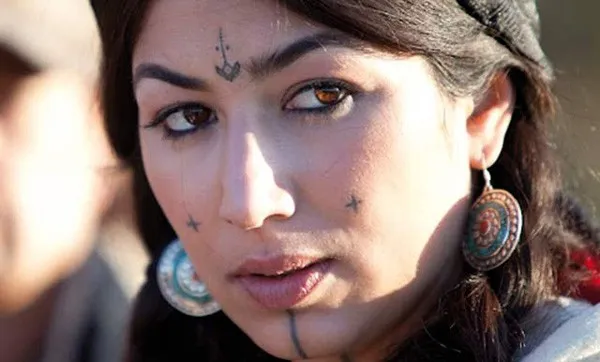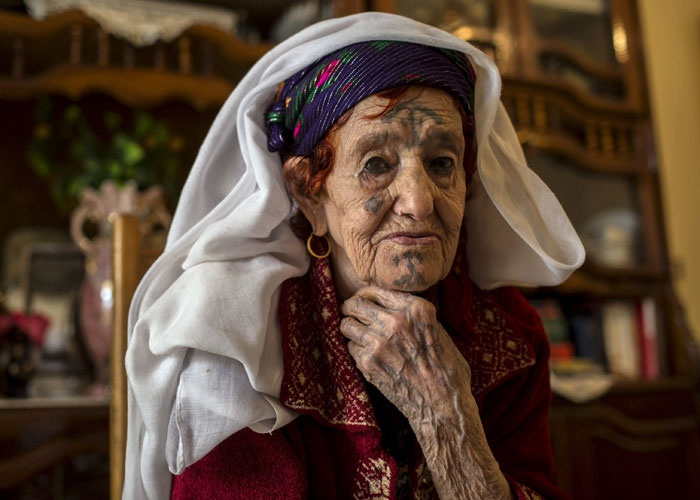Tattooing in Tunisia: From the Amazighs to the New Generation

Since ancient times, people have mastered the art of drawing on the body with different expressions and for various purposes. Tattooing is one of the oldest of these practices, as it appeared in various civilizations throughout history.
In Tunisia, tattoos appeared with the Amazighs, the indigenous people of the country, as it is considered an ancient and deep-rooted heritage in the Amazigh culture and part of its identity.
In the Amazigh language, it is called "Tikaz", and it was associated mainly with women and to a lesser extent with men. The majority of Amazigh women have tattoos.
Tattoos take on an aesthetic dimension for the Amazighs and are considered one of the most important means of adornment for women throughout their lives. They are tattooed at the age of puberty to announce through shapes, symbols and drawings their entry into the stage of maturity. And she puts tattoos in various areas of her body, such as the face, arm, hand, chest, breasts, legs, and sensitive areas of her body, so that it turns into a painting that addresses the other to impress him. So the tattoo becomes an aesthetic seductive connotation.
As for men, they are satisfied with some tattoos on the hand, arm and legs.

The drawings that fill the girl's body are not absurd, and each symbol has its own meanings.
One of the most prominent drawings spread among the majority of Amazigh women is the plus sign (+), which is drawn on the cheek and means the letter Ta in the Amazigh letters, which is an abbreviation of the word “tamtout”, which means the beautiful female. Or the beautiful, elegant woman.
The meanings of the symbols also differ according to their position in the body. Those drawn on the breasts, for example, bear connotations of fertility.
The Amazigh s also practiced tattooing for medical purposes, as they believed that it cures diseases, asks for fertility for the barren, wards off envy and the evil eye, and protects against epidemics.
They used to tattoo a point next to the nose to protect against dental diseases, or next to the eye to prevent diseases affecting the eyes.
Tattoos also have metaphysical functions, and it was believed that they ward off evil spirits, nullify witchcraft, and ward off poverty and misery, through drawings and symbols that are placed with extreme precision.
Among the most used symbols are the bee, the snail, the snake, ears of wheat, the sun, the scorpion, the stars, the olive branch, and other symbols that carry many meanings, some of which symbolize the location of each Amazigh tribe.
The tattoo turned the body of the Amazigh person into a legible art painting rich in symbols and drawings, which narrates to subsequent generations the characteristics of this civilization, and reflects the value and cultural system of those societies.
With the advent of Islam and its spread in the country and the Amazighs embracing it, they did not abandon this practice despite the prophetic hadiths prohibiting tattoos. Rather, it spread more, especially among tribal, Bedouin and rural societies, and it was inherited by generations until independence (mid-twentieth century), when tattoos would have different connotations.
With the sixties of the last century and the modern state, tattoos had completely different purposes, and began to lose its original character, and no longer carry its original connotations. It has become a shame for women to get tattooed, and it is only associated with men, and in the popular sense of delinquents or unemployed people.

The drawings and their locations have changed, and the face is no longer a space for them, and they are mainly placed on the neck, arm, shoulder and legs.
Tattoos no longer have any collective link, and each drawing or symbol has a meaning that belongs to its owner only. Drawings and symbols of power spread, such as images of an eagle, scorpion, dragon, and snake, in addition to the first letter of a person's name, or the name of a beloved.
Prisons, in turn, incubated tattoos in a secret manner, as sharp tools are illegally introduced, or made in prison, and dry pen ink is used.
It is noted that the majority of the drawings that are tattooed in prison are drawings that bear the meanings of freedom and life, such as the candle, the anchor, and the sun.
With the new millennium, and with what is known as the sons of the new generation, tattoos began to lose their traditional characteristics, their primary means, and their anthropological identities, affected by technical variables. But it returned to include both males and females, as it began with the Amazighs, and all age groups. And it became a phenomenon in the Tunisian street.

And while the Amazighs and the later people who inherited this habit, especially in rural communities, used the green color and to a lesser extent the black color (black was used to ward off magic and evil spirits according to beliefs), the bodies of the new generation have become all colors.
The spread of tattoos in its new ways is due to the spread of the shops specialized in it, which have become attractive to many, especially in the summer season, which represents an occasion to show off these decorations and make them visible.
As for the reasons for the demand for tattoos, they are many and differ from one young man to another. Young people today are looking for a difference in appearance, away from the ordinary.
Imitation also plays a major role in this, as young people imitate famous artists, actors, and athletes, even in their lifestyle. Globalization, with its various means, also played an important role in its spread.
In the month of Ramadan 2015, a private Tunisian channel aired a Tunisian series whose hero bears a tattoo extending from his upper arm to his shoulder.
The tattoo became a symbol of "Mofida's Children", the title of the series, which some considered an embodiment of the life of a large group of Tunisian youth.
Source: websites

